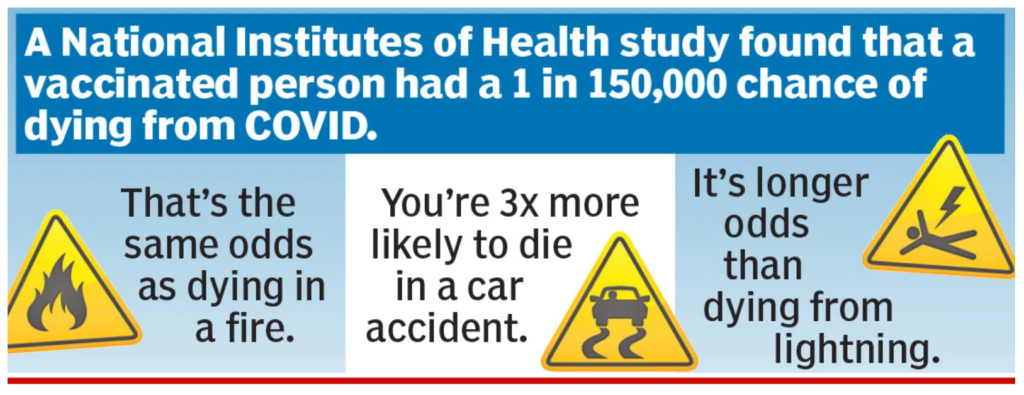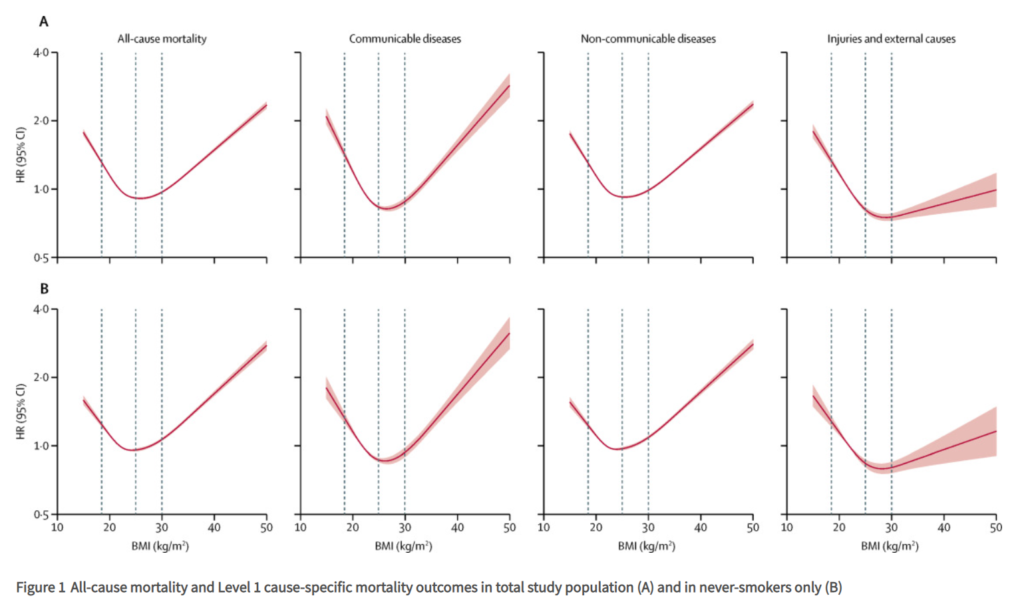Link:https://nypost.com/2022/02/08/lightnings-more-likely-good-odds-for-vaxxed/
Graphic:

Excerpt:
Those odds can be gauged from a study by researchers at the National Institutes of Health, published by the Centers for Disease Control and Prevention. They tracked more than 1 million vaccinated adults in America over most of last year, including the period when the Delta variant was surging, and classified victims of COVID according to risk factors such as being over 65, being immunosuppressed or suffering from diabetes or chronic diseases of the heart, kidney, lungs, liver or brain.
The researchers report that none of the healthy people under 65 had a severe case of COVID that required treatment in an intensive-care unit.
Not a single one of these nearly 700,000 people died, and the risk was minuscule for most older people, too. Among vaccinated people over 65 without an underlying medical condition, only one person died.
In all, there were 36 deaths, mostly among a small minority of older people with a multitude of comorbidities: the 3% of the sample that had at least four risk factors.
Author(s): John Tierney
Publication Date: 8 Feb 2022
Publication Site: NY Post
